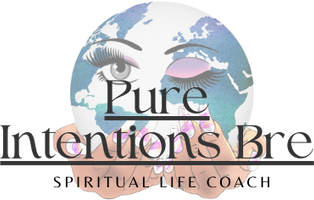What is Reiki & its benefits?
Imagine harnessing the universe’s energy to heal, restore, and balance your life. That’s Reiki for you – a profound yet simplistic healing technique that is as intriguing as it is therapeutic.
Understanding Reiki: A Basic Overview
Reiki, a term derived from two Japanese words: ‘Rei’ meaning ‘Universal Life’ and ‘Ki’ referring to ‘Energy,’ is a spiritual healing practice. It was developed in Japan in the early 20th century by Mikao Usui. Unlike other healing modalities, Reiki works on the premise of transferring universal energy from the practitioner’s palms to the patient, facilitating the body’s natural healing processes.
This practice doesn’t rely on any medications or instruments. Instead, it’s a subtle yet impactful form of energy work that addresses physical, mental, and emotional imbalances. Reiki practitioners believe that everyone has the ability to connect with their own healing energy and use it to strengthen energy in themselves or help others.
The Historical Roots of Reiki
The origins of Reiki trace back to Mikao Usui in the early 1920s. After a profound spiritual experience on Mount Kurama, Usui developed this method of healing, initially as a means of self-improvement and spiritual awakening, before realizing its potential to aid others. Following Usui, Chujiro Hayashi and Hawayo Takata were instrumental in transforming Reiki into the structured practice it is today, with Takata introducing it to the Western world.
How Reiki Works: The Energy Transfer Process
Reiki operates on the principle that the therapist can channel energy into the patient by means of touch, activating the natural healing processes of the patient’s body and restoring physical and emotional well-being. Practitioners use a technique called ‘palm healing’ or ‘hands-on healing’ through which the ‘life force energy’ flows through their hands to the person being treated.
Critics often question the scientific basis of Reiki, but its practitioners and recipients report experiencing a profound sense of calm, reduced stress levels, and a hastened process of recovery from various ailments after sessions. Although difficult to measure by conventional scientific methods, many attest to its effectiveness, seeing it as complementary to traditional medical treatments.
Top Benefits of Reiki for Mind, Body, and Spirit
The benefits of Reiki are manifold, spanning from deep relaxation to the alleviation of stress and anxiety. It’s known to aid in pain management, improve sleep patterns, and support the body’s natural healing abilities. Beyond physical wellness, Reiki often plays a crucial role in mental and emotional healing, helping individuals overcome trauma, depression, and anxiety.
On a deeper level, Reiki fosters spiritual growth by enhancing one’s self-awareness and connection to the universal energy. It opens up pathways to inner peace and mindfulness, encouraging a life lived with greater intention and harmony.
Interestingly, Reiki’s benefits aren’t just limited to the recipients. Practitioners often report feelings of increased energy, heightened intuition, and a deeper sense of personal wellbeing as a result of conducting Reiki sessions.
Incorporating Reiki into Your Daily Life
Incorporating Reiki into your daily life can be as simple as practicing self-Reiki for a few minutes each day, attending regular sessions with a qualified Reiki practitioner, or even taking a course to become a Reiki practitioner yourself.
Many find that starting or ending their day with Reiki helps to prepare their mind and body for the day ahead or to release the stresses of the day before bed. Some incorporate Reiki principles into their meditation or yoga practices, enhancing their spiritual and physical regimen.
The beauty of Reiki is its flexibility; it can be adapted to meet individual needs and schedules, making it an accessible tool for anyone seeking to improve their wellbeing.
Embracing Reiki is more than just attending sessions; it’s about embarking on a journey of self-discovery, healing, and spiritual enlightenment. The benefits of Reiki touch every aspect of your being, offering a pathway to a more harmonious and balanced life.
Reiki Master Bre’ weaves biblical wisdom into her healing practices, praising The Most High & The Holy Spirit for her gifts in clearing clients’ obstacles. She guides people to not only find clarity but also to grasp the reasons behind their experiences and how to move forward with renewed insight. Bre’ doesn’t direct her students to rely on deities; instead, she teaches them to access their own inherent, spiritual abilities. Through her, individuals find transformation, understanding, and the ability to navigate their lives with a refreshed perspective.




